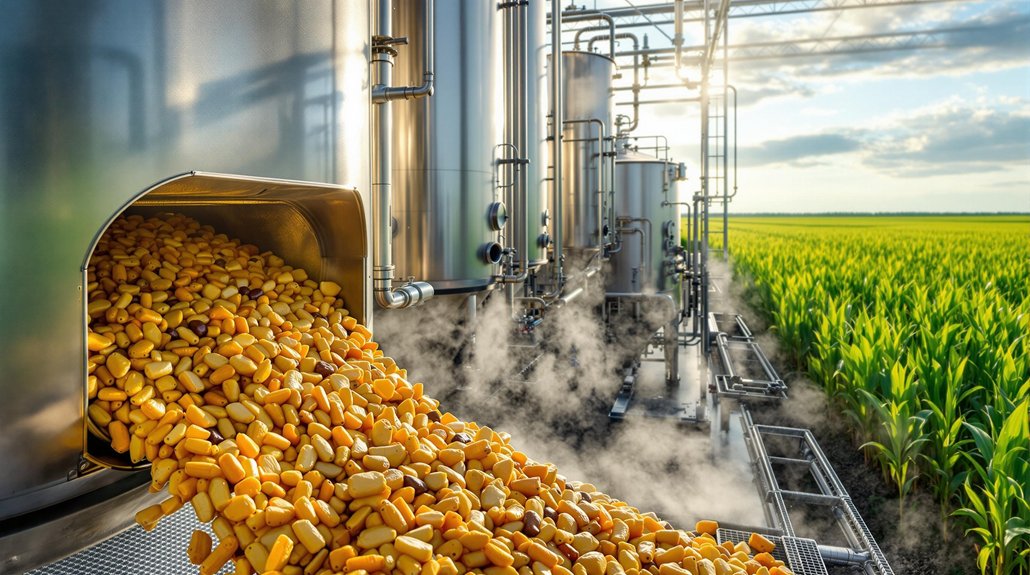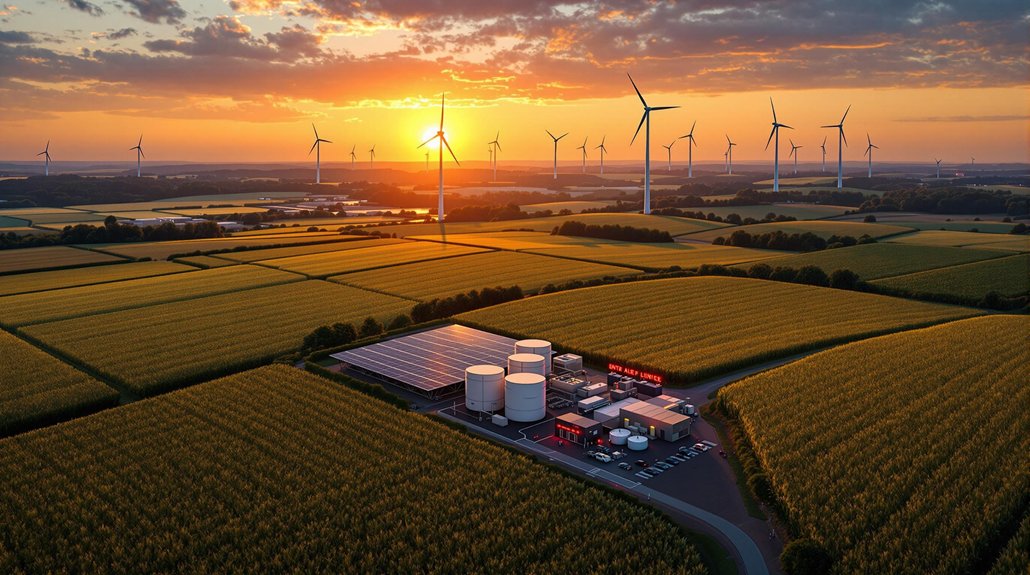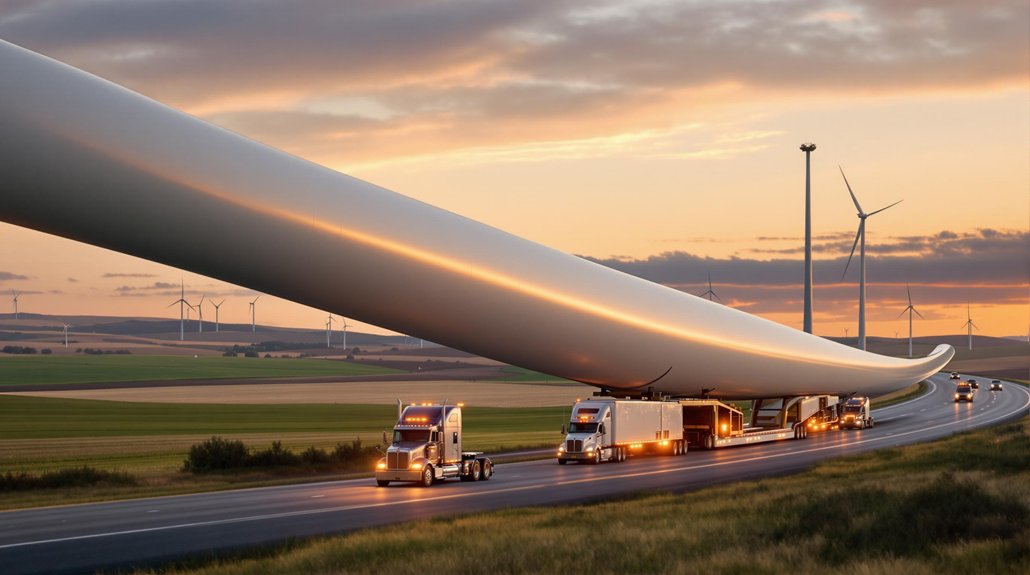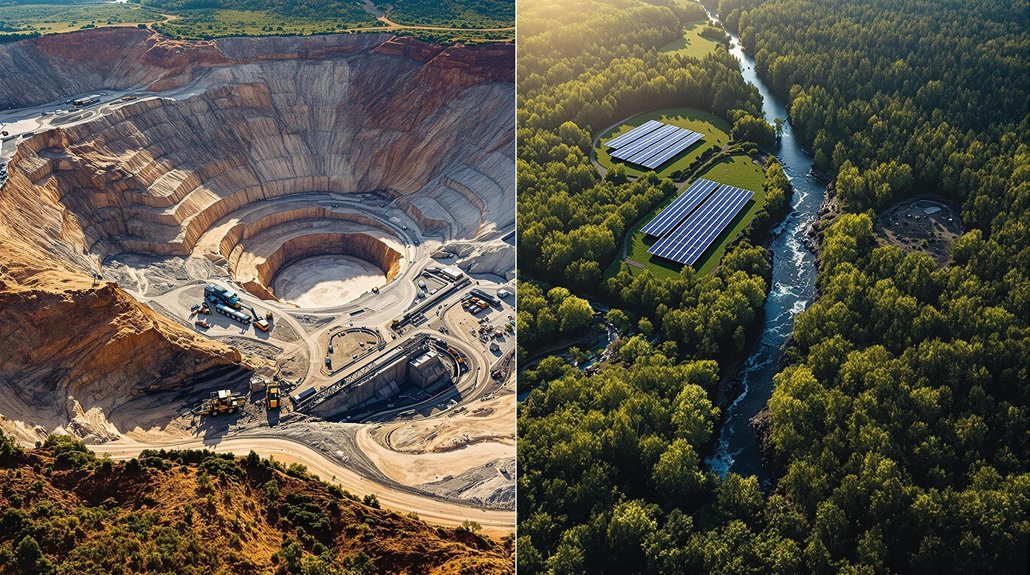Converting biomass to ethanol is a promising renewable energy option. The process transforms plant materials like corn waste and wood chips into fuel through grinding, treatment, and fermentation. It produces 60-90% less greenhouse gases than gasoline and creates jobs in rural areas. Though production costs range from $2.15 to $4.50 per gallon, ongoing technological improvements are making it more economical. The future of this sustainable alternative continues to brighten with each advancement.
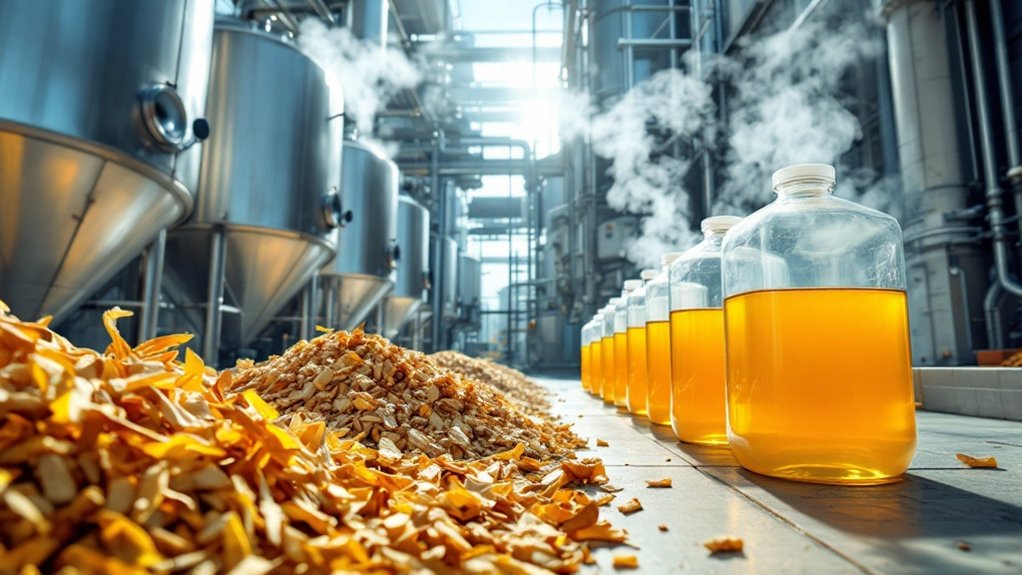
The transformation of plant material into fuel represents one of today’s most promising renewable energy solutions. Scientists can use many types of plant matter to make ethanol, a renewable fuel that works in many vehicles. These materials include corn waste, wood chips, and even yard trimmings from homes.
Before these materials become fuel, they need special treatment. Workers first grind the plant matter into smaller pieces. Then, they use methods like steam explosion or chemical treatments to break down the tough plant structures. This step makes it easier to get to the sugars inside the plant cells.
The next step is hydrolysis, which turns plant material into simple sugars. Companies use special enzymes or acids to do this job. These sugars then feed tiny organisms during fermentation, which creates ethanol as a product. Some newer methods combine these steps to save time and money.
Scientists are always finding ways to make more ethanol from the same amount of plant matter. They create better microbes through genetic engineering and develop more efficient enzymes. These improvements help lower production costs, which currently range from $2.15 to $4.50 per gallon.
Ethanol from plants offers big environmental benefits. It produces 60-90% less greenhouse gases than gasoline. Growing certain plants for fuel can even store carbon in the soil. However, making ethanol does use water—about 2.7 gallons for each gallon of fuel produced.
The economics of plant-based ethanol continue to improve. A typical production facility costs between $350-$500 million to build but creates nearly five jobs for each million gallons of yearly capacity. Common fuel blends like E10 and E85 offer consumers different options for utilizing ethanol in their vehicles. Beyond transportation, ethanol can also power backup systems for critical infrastructure like hospitals during emergencies.
While government tax credits that once supported the industry have expired, ethanol remains an important part of America’s fuel mix. As technologies improve and costs decrease, ethanol from plant waste and dedicated energy crops may play a growing role in our sustainable energy future.
Frequently Asked Questions
Is Biomass-Based Ethanol More Expensive Than Conventional Gasoline?
Yes, biomass-based ethanol is typically more expensive than conventional gasoline.
Corn ethanol costs $0.46-$1.00 per gasoline equivalent liter, while cellulosic ethanol is even pricier at $1.04-$1.45.
Conventional gasoline production ranges from $0.44-$0.60 per liter.
Without government subsidies (about $0.20 per liter), ethanol isn’t cost-competitive.
That’s why the industry relies on blending mandates and subsidies to remain viable in the marketplace.
How Much Farmland Is Diverted From Food Production for Ethanol?
Approximately 27 million acres of U.S. farmland are currently used for ethanol production and its co-products. This represents about 30% of America’s corn crop and roughly 35-40% of total corn acreage.
While critics argue this diverts land from food production, supporters point out that ethanol by-products like distillers grains are used as animal feed.
What Byproducts Result From Ethanol Production?
Ethanol production creates several valuable byproducts.
Distillers grains, the main byproduct, serves as protein-rich animal feed in wet or dried forms.
Corn oil extraction yields material for biodiesel or animal feed.
Carbon dioxide generated during fermentation can be captured for food industry use.
Other byproducts include corn gluten meal, corn gluten feed, condensed distillers solubles, corn germ, corn bran, and lignin from cellulosic production.
Can Ethanol Production Achieve Carbon Neutrality?
Ethanol production can achieve carbon neutrality through several key methods.
Scientists say combining carbon capture technology, climate-smart farming, and renewable energy at production facilities creates a path to net-zero emissions.
Current corn ethanol already cuts greenhouse gases by 46% compared to gasoline.
Advanced technologies like cellulosic ethanol offer even greater reductions of up to 108%.
However, challenges remain in scaling these solutions economically.
How Does Weather Variability Affect Biomass Feedstock Supplies?
Weather variability greatly disrupts biomass feedstock supplies.
Drought reduces crop yields and alters chemical composition in plants like Miscanthus and tall fescue. Extreme weather events, becoming more frequent, cause year-to-year chemical changes and lower production.
During droughts, additional biomass becomes more expensive. These changes affect conversion efficiency at biorefineries.
Different biomass types show varying responses to weather stress, with switchgrass demonstrating better drought tolerance than other crops.
